Wednesday, January 9, 2013
From a poem by Frances Frost—
"The upper peak, the shattered rock that cleaves the northward sky
remains alone untaken by the darkness"
— "From a Mountain-Top," The North American Review ,
December 1939 (Vol. 248, No. 2, page 301)
For some material related to the Frost poem,
if only by verbal coincidence, see shattered + rock in this journal.
See also rock + cleavage.
For the relationship to Eve, see New Year's Eve, 2012,
and the following image by Karolin Schnoor, who also
illustrated the New York Times op-ed piece "Catholic
Education, in Need of Salvation" published online on
Epiphany 2013 (see last evening's Log24 post)—

For some context, see Establishment of the Talented.
Comments Off on Eve and Cleavage
"Catherine, Duchess of Cambridge, is 31."
— The Associated Press this morning, Jan. 9.
See also, in honor of the date of the Duchess's birth—
1982 Jan. 9— Django in this journal.
Comments Off on Django
Tuesday, January 8, 2013
"The way, when we climb a mountain,
Vermont throws itself together"
— Wallace Stevens, "July Mountain"

For another view of reality in New Haven, see the
brief biography of Vermont poet Frances Frost
at the Yale University Library. From that biography:
"She was survived by her son, the poet Paul Blackburn,
and by her daughter, Sister Marguerite of the Order
of St. Joseph."
See also a figure from The New York Times published
online on Epiphany, 2013:

Comments Off on Vermont Throws Itself Together
The New York Times today has an
obituary of poet Harvey Shapiro—
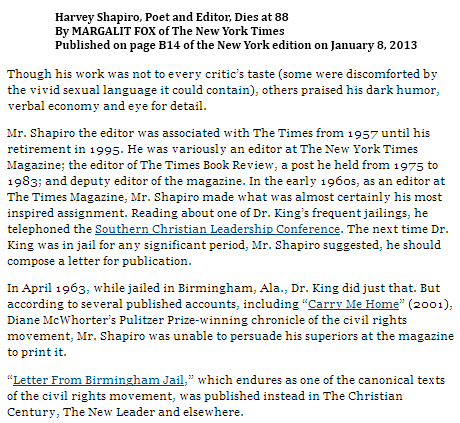
See also the following image

elsewhere in this journal.
Comments Off on Star Wars (continued)
Old Stone-Cutter
His gravestones are his everlasting children.
He loves to get his cramped left hand around
the solid faithful feeling of his chisel
and dig the names of those below the ground
or the family names of provident ones above
who cross their fingers and defy the fates
and acknowledge death their enemy and master
by ordering headstones with their birthing dates.
He carves his holy head, a solemn cherub
with granite wings and childish eyes cast down.
Those who prefer a willowed urn, disliking
angels, can go and die in another town.
FRANCES FROST
(From The North American Review , Vol. 248, No. 2,
1939, page 301)
Solemn cherub by Albrecht Dürer in 1514—

Comments Off on Necessary Angel
In honor of a famed architecture critic,
here is a link to Bruno's Atria.
See also Giordano Bruno in this journal.
Comments Off on Nine is a Vine (continued)
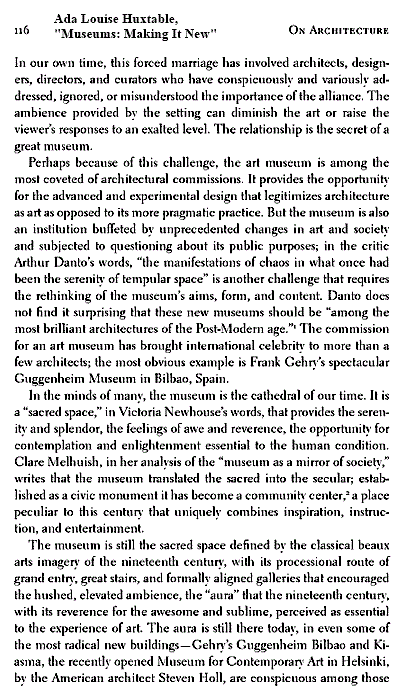
Temporal note: The time of this post, 8:09 AM ET, may be regarded
as a reference to the date 8/09 in the year of our Lord 2010. See also,
in this journal on that date, "Angels in the Architecture (continued)."
Comments Off on Tempular
Monday, January 7, 2013
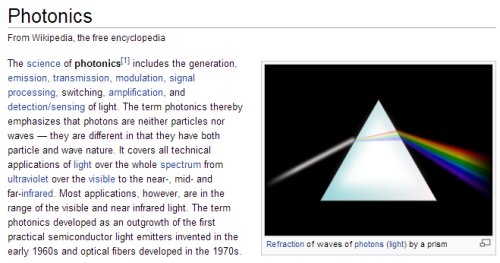
"Not only was he world class, highly regarded and effective,
but he also offered a story, a lesson, or a playful insight
that was there if you were paying attention."
— Tribute to the late Tingye Li, past president of the
Optical Society of America, who died on Dec. 27
See also Object Lesson.
Comments Off on A Rainbow for Li
Sunday, January 6, 2013
For the Feast of Epiphany:
A trip back to December 1955—


Meditations for Three Kings Day (Feast of Epiphany)—
"Show me all the blueprints." — Leonardo DiCaprio as Howard Hughes
"The Tesseract is where it belongs: out of our reach." — Samuel L. Jackson as Nick Fury
"Here was finality indeed, and cleavage!" — Malcolm Lowry's Under the Volcano (1947)
Click images for some background.
Comments Off on True Fury
Saturday, January 5, 2013
The finite (i.e., Galois) field GF(16),
according to J. J. Seidel in 1974—

The same field according to Steven H. Cullinane in 1986,
in its guise as the affine 4-space over GF(2)—

The same field, again disguised as an affine 4-space,
according to John H. Conway and N.J.A. Sloane in
Sphere Packings, Lattices, and Groups , first published in 1988—

The above figure by Conway and Sloane summarizes, using
a 4×4 array, the additive vector-space structure of the finite
field GF(16).
This structure embodies what in Euclidean space is called
the parallelogram rule for vector addition—

(Thanks to June Lester for the 3D (uvw) part of the above figure.)
For the transition from this colored Euclidean hypercube
(used above to illustrate the parallelogram rule) to the
4×4 Galois space (illustrated by Cullinane in 1979 and
Conway and Sloane in 1988— or later… I do not have
their book’s first edition), see Diamond Theory in 1937,
Vertex Adjacency in a Tesseract and in a 4×4 Array,
Spaces as Hypercubes, and The Galois Tesseract.
For some related narrative, see tesseract in this journal.
(This post has been added to finitegeometry.org.)
Update of August 9, 2013—
Coordinates for hypercube vertices derived from the
parallelogram rule in four dimensions were better
illustrated by Jürgen Köller in a web page archived in 2002.
Update of August 13, 2013—
The four basis vectors in the 2002 Köller hypercube figure
are also visible at the bottom of the hypercube figure on
page 7 of “Diamond Theory,” excerpts from a 1976 preprint
in Computer Graphics and Art , Vol. 2, No. 1, February 1977.
A predecessor: Coxeter’s 1950 hypercube figure from
“Self-Dual Configurations and Regular Graphs.”
Comments Off on Vector Addition in a Finite Field
Friday, January 4, 2013
"When you study the basics very thoroughly,
you never know where it may end."
— Ulrich Schneider, U. of Munich physicist,
in a science story by Charles Choi today
Comments Off on Basics
Thursday, January 3, 2013
From an obituary of singer Patti Page, who died on New Year's Day—
"Clara Ann Fowler was born Nov. 8, 1927, in Claremore, Okla., and grew up in Tulsa. She was one of 11 children and was raised during the Great Depression by a father who worked for the railroad.
She told the Times that her family often did not have enough money to buy shoes. To save on electricity bills, the Fowlers listened to only a few select radio programs. Among them was 'Grand Ole Opry.'"
See also two poems by Wallace Stevens and some images related to yesterday's Log24 post.
Comments Off on Two Poems and Some Images
Wednesday, January 2, 2013
Update of May 27, 2013:
The post below is now outdated. See
http://planetmath.org/cullinanediamondtheorem .
__________________________________________________________________
The brief note on the diamond theorem at PlanetMath
disappeared some time ago. Here is a link to its
current URL: http://planetmath.org/?op=getobj;from=lec;id=49.
Update of 3 PM ET Jan. 2, 2013—
Another item recovered from Internet storage:

Click on the Monthly page for some background.
Comments Off on PlanetMath link
Tuesday, January 1, 2013
Thanks to a Harvard math major for the following V. I. Arnold quote
in a weblog post yesterday titled "Abstraction and Generality"—
"… the author has attempted to adhere to the principle of
minimal generality, according to which every idea should first
be clearly understood in the simplest situation;*
only then can the method developed be extended to
more complicated cases.
— Vladimir I. Arnold, Lectures on Partial Differential Equations
(Russian edition 1997; English translation 2004),
Preface to the second Russian edition
Thanks also to the math major for his closing post today.
* For instance… Natalie Angier's New Year's meditation
on a Buddha Field—
"… the multiverse as envisioned in Tibetan Buddhism,
'a vast system of 1059 [sic ; corrected to 10^59 on Jan. 3]
universes, that together are called a Buddha Field,' said
Jonathan C. Gold, who studies Buddhist philosophy at
Princeton."
— versus a search in this journal for "Japanese character" that yields…

Japanese character
for "field"
Comments Off on The Simplest Situation
Monday, December 31, 2012
Midnight in Paris

See also Mariani in this journal.
Comments Off on 6 PM ET is…
![IMAGE- The Art World: Shapes of Things- The Birth of the Abstract [New Yorker title]](http://www.log24.com/log/pix12D/121231-Schjeldahl-Review.jpg)
"What possessed a generation of young European artists,
and a few Americans, to suddenly suppress recognizable imagery
in pictures and sculptures? Unthinkable at one moment, the strategy
became practically compulsory in the next."
— Peter Schjeldahl in the current New Yorker
The following remarks may or may not be relevant.
Paul Valéry, "Introduction to the Method of Leonardo da Vinci,"
La Nouvelle Revue , Paris, Vol. 95 (1895)—
"Regarded thus, the ornamental conception is to the individual arts
what mathematics is to the other sciences. …the objects chosen
and arranged with a view to a particular effect seem as if disengaged
from most of their properties and only reassume them in the effect,
in, that is to say, the mind of the detached spectator. It is thus
by means of an abstraction that the work of art can be constructed,
and is more or less easy to define according as the elements borrowed
from reality for it are more or less complex. Inversely it is by a sort of
induction, by the production of mental images, that all works of art are
appreciated, and this production must equally be more or less active,
more or less tiring, according as it is set in motion by a simple
interlacing on a vase or a broken phrase by Pascal."
— Translated by Thomas McGreevy (Valéry's Selected Writings,
New Directions, 1950)
Paul Valéry, "Introduction a la Méthode de Léonard de Vinci,"
La Nouvelle Revue , Paris, Tome 95 (1895), p. 762—
"De ce point de vue, la conception ornementale est aux arts
particuliers ce que la mathématique est aux autres sciences. De
même que les notions physiques de temps, longueur, densité,
masse, etc., ne sont dans les calculs que des quantités homo-
gènes et ne retrouvent leur individualité que dans l'interprétation
des résultats, de même les objets choisis et ordonnés en vue d'un
effet sont comme détachés de la plupart de leurs propriétés et
ne les reprennent que dans cet effet, dans l'esprit non prévenu
du spectateur. C'est donc par une abstraction que l'œuvre d'art
peut se construire, et cette abstraction est plus ou moins éner-
gique, plus ou moins facile à y découvrir, que les éléments em-
pruntés à la réalité en sont des portions plus ou moins com-
plexes. Inversement, c'est par une sorte d'induction, par la
production d'images mentales que toute œuvre d'art s'apprécie;
et cette production doit être également plus ou moins énergique,
plus ou moins fatigante selon qu'un simple entrelacs sur un
vase ou une phrase brisée de Pascal la sollicite."
Comments Off on Abstraction
Obituaries for New Year's Eve—

A link from Christmas Day—

Easter meditations—


See also…
Comments Off on Holiday Philosophy
Sunday, December 30, 2012

"I never had any hesitation or regrets…."
— Rita Levi-Montalcini, who died today at 103
See also today's previous post and…
Turning the Page:

Comments Off on Rien de Rien (continued)
George Steiner, Real Presences , first published in 1989—
The inception of critical thought, of a philosophic anthropology,
is contained in the archaic Greek definition of man as a
'language-animal'….
Richard Powers, The Gold Bug Variations , first published in 1991—
Botkin, whatever her gifts as a conversationist, is almost as old
as the rediscovery of Mendel. The other extreme in age,
Joe Lovering, beat a time-honored path out of pure math
into muddy population statistics. Ressler has seen the guy
potting about in the lab, although exactly what the excitable kid
does is anybody's guess. He looks decidedly gumfooted holding
any equipment more corporeal than a chi-square. Stuart takes
him to the Y for lunch, part of a court-your-resources campaign.
He has the sub, Levering the congealed mac and cheese.
Hardly are they seated when Joe whips out a napkin and begins
sketching proofs. He argues that the genetic code, as an
algorithmic formal system, is subject to Gödel's Incompleteness
Theorem. "That would mean the symbolic language of the code
can't be both consistent and complete. Wouldn't that be a kick
in the head?"
Kid talk, competitive showing off, intellectual fantasy.
But Ressler knows what Joe is driving at. He's toyed with similar
ideas, cast in less abstruse terms. We are the by-product of the
mechanism in there. So it must be more ingenious than us.
Anything complex enough to create consciousness may be too
complex for consciousness to understand. Yet the ultimate paradox
is Lovering, crouched over his table napkin, using proofs to
demonstrate proof's limits. Lovering laughs off recursion and takes
up another tack: the key is to find some formal symmetry folded
in this four-base chaos. Stuart distrusts this approach even more.
He picks up the tab for their two untouched lunches, thanking
Lovering politely for the insight.
Edith Piaf—
Non, rien de rien…
See last midnight's post and Theme and Variations.
"The key is to find some formal symmetry…."

Comments Off on The Kick
"It is not often anyone will hear the phrase 'Galois field' and 'DNA' together…."
— Ewan Birney at his weblog on July 3, 2012.
Try a Google search. (And see such a search as of Dec. 30, 2012.)
See also "Context Part III" in a Log24 post of Sept. 17, 2012.
Comments Off on Not Often
Saturday, December 29, 2012
A mapping problem posed (informally) in 1985
and solved 27 years later, in 2012:

See also Finite Relativity and Finite Relativity: The Triangular Version.
(A note for fans of the recent film Looper (see previous post)—
Hunter S. Thompson in this journal on February 22, 2005 …

Hunter S. Thompson, photos from The New York Times
… and on March 3, 2009.)
Comments Off on Mapping Problem
Friday, December 28, 2012
Joseph Gordon-Levitt and Bruce Willis in Looper :

Bruce Willis in 12 Monkeys :

See also Big Time in this journal.
Comments Off on Big Time
|
From Don DeLillo's novel Point Omega —
I knew what he was, or what he was supposed to be, a defense intellectual, without the usual credentials, and when I used the term it made him tense his jaw with a proud longing for the early weeks and months, before he began to understand that he was occupying an empty seat. "There were times when no map existed to match the reality we were trying to create."
"What reality?"
"This is something we do with every eyeblink. Human perception is a saga of created reality. But we were devising entities beyond the agreed-upon limits of recognition or interpretation. Lying is necessary. The state has to lie. There is no lie in war or in preparation for war that can't be defended. We went beyond this. We tried to create new realities overnight, careful sets of words that resemble advertising slogans in memorability and repeatability. These were words that would yield pictures eventually and then become three-dimensional. The reality stands, it walks, it squats. Except when it doesn't."
He didn't smoke but his voice had a sandlike texture, maybe just raspy with age, sometimes slipping inward, becoming nearly inaudible. We sat for some time. He was slouched in the middle of the sofa, looking off toward some point in a high corner of the room. He had scotch and water in a coffee mug secured to his midsection. Finally he said, "Haiku."
I nodded thoughtfully, idiotically, a slow series of gestures meant to indicate that I understood completely.
"Haiku means nothing beyond what it is. A pond in summer, a leaf in the wind. It's human consciousness located in nature. It's the answer to everything in a set number of lines, a prescribed syllable count. I wanted a haiku war," he said. "I wanted a war in three lines. This was not a matter of force levels or logistics. What I wanted was a set of ideas linked to transient things. This is the soul of haiku. Bare everything to plain sight. See what's there. Things in war are transient. See what's there and then be prepared to watch it disappear."
|
What's there—

This view of a die's faces 3, 6, and 5, in counter-
clockwise order (see previous post) suggests a way
of labeling the eight corners of a die (or cube):
123, 135, 142, 154, 246, 263, 365, 456.
Here opposite faces of the die sum to 7, and the
three faces meeting at each corner are listed
in counter-clockwise order. (This corresponds
to a labeling of one of MacMahon's* 30 colored cubes.)
A similar vertex-labeling may be used in describing
the automorphisms of the order-8 quaternion group.
For a more literary approach to quaternions, see
Pynchon's novel Against the Day .
* From Peter J. Cameron's weblog:
"The big name associated with this is Major MacMahon,
an associate of Hardy, Littlewood and Ramanujan,
of whom Robert Kanigel said,
His expertise lay in combinatorics, a sort of
glorified dice-throwing, and in it he had made
contributions original enough to be named
a Fellow of the Royal Society.
Glorified dice-throwing, indeed…"
Comments Off on Cube Koan
Thursday, December 27, 2012

Note that the visible faces of the die, in counter -clockwise
order, are 3 6 5. See also this journal 365 days ago and,
since 2012 is a leap year, also today's date last year.
Comments Off on Cast
Yesterday's post on the current Museum of Modern Art exhibition
"Inventing Abstraction: 1910-1925" suggests a renewed look at
abstraction and a fundamental building block: the cube.
From a recent Harvard University Press philosophical treatise on symmetry—

The treatise corrects Nozick's error of not crediting Weyl's 1952 remarks
on objectivity and symmetry, but repeats Weyl's error of not crediting
Cassirer's extensive 1910 (and later) remarks on this subject.
For greater depth see Cassirer's 1910 passage on Vorstellung :
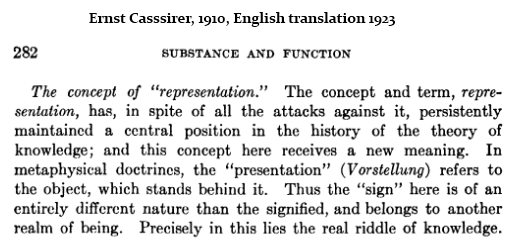
This of course echoes Schopenhauer, as do discussions of "Will and Idea" in this journal.
For the relationship of all this to MoMA and abstraction, see Cube Space and Inside the White Cube.
"The sacramental nature of the space becomes clear…." — Brian O'Doherty
Comments Off on Object Lesson
Wednesday, December 26, 2012
This journal on June 24, 2006—
Robert M. Pirsig, Zen and the Art of Motorcycle Maintenance , 1974:
"But what's happening is that each year our old flat earth of
conventional reason becomes less and less adequate to handle
the experiences we have and this is creating widespread feelings
of topsy-turviness. As a result we're getting more and more people
in irrational areas of thought… occultism, mysticism, drug changes
and the like… because they feel the inadequacy of classical reason
to handle what they know are real experiences."
"I'm not sure what you mean by classical reason."
"Analytic reason, dialectic reason. Reason which at the University
is sometimes considered to be the whole of understanding. You've
never had to understand it really. It's always been completely
bankrupt with regard to abstract art. Nonrepresentative art is one of
the root experiences I'm talking about. Some people still condemn it
because it doesn’t make 'sense.' But what's really wrong is not
the art but the 'sense,' the classical reason, which can't grasp it.
People keep looking for branch extensions of reason that will cover
art's more recent occurrences, but the answers aren't in the
branches, they're at the roots."
See also an exhibition at the Museum of Modern Art that opened Dec. 23—

— and an exhibition in this journal of the image "Root Circle."
Comments Off on Roots
Tuesday, December 25, 2012
Comments Off on Mot Juste
A meditation on the performance of the late Charles Durning
in the film The Best Little Whorehouse in Texas .
Comments Off on At Heaven’s Gate
Monday, December 24, 2012
Raiders of the Lost Trunk, or:
Stars in the Attic

More »
See also A Glass for Klugman :

Context: Poetry and Truth, Eternal Recreation,
Solid Symmetry, and Stevens's Rock.
Comments Off on Post-Mortem for Quincy
Where Kirkland meets Quincy—

Click image for some context.
Comments Off on Memorial
Octavio Paz —
"… the movement of analogy
begins all over once again."
See A Reappearing Number in this journal.
Illustrations:
Figure 1 —

Background: MOG in this journal.
Figure 2 —
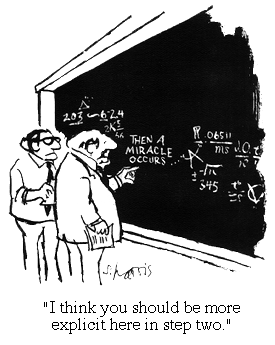
Cartoon by S.Harris
Background —
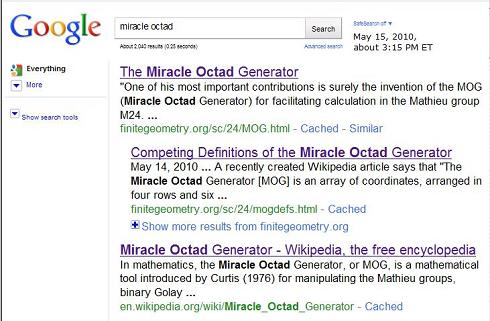
Comments Off on All Over Again
Memories, Dreams, Reflections
by C. G. Jung
Recorded and edited By Aniela Jaffé, translated from the German
by Richard and Clara Winston, Vintage Books edition of April 1989
From pages 195-196:
"Only gradually did I discover what the mandala really is:
'Formation, Transformation, Eternal Mind's eternal recreation.'*
And that is the self, the wholeness of the personality, which if all
goes well is harmonious, but which cannot tolerate self-deceptions."
* Faust , Part Two, trans. by Philip Wayne (Harmondsworth,
England, Penguin Books Ltd., 1959), p. 79. The original:
… Gestaltung, Umgestaltung,
Des ewigen Sinnes ewige Unterhaltung….
Jung's "Formation, Transformation" quote is from the realm of
the Mothers (Faust , Part Two, Act 1, Scene 5: A Dark Gallery).
The speaker is Mephistopheles.
See also Prof. Bruce J. MacLennan on this realm
in a Web page from his Spring 2005 seminar on Faust:
"In alchemical terms, F is descending into the dark, formless
primary matter from which all things are born. Psychologically
he is descending into the deepest regions of the
collective unconscious, to the source of life and all creation.
Mater (mother), matrix (womb, generative substance), and matter
all come from the same root. This is Faust's next encounter with
the feminine, but it's obviously of a very different kind than his
relationship with Gretchen."
The phrase "Gestaltung, Umgestaltung " suggests a more mathematical
approach to the Unterhaltung . Hence…
Part I: Mothers
"The ultimate, deep symbol of motherhood raised to
the universal and the cosmic, of the birth, sending forth,
death, and return of all things in an eternal cycle,
is expressed in the Mothers, the matrices of all forms,
at the timeless, placeless originating womb or hearth
where chaos is transmuted into cosmos and whence
the forms of creation issue forth into the world of
place and time."
— Harold Stein Jantz, The Mothers in Faust:
The Myth of Time and Creativity ,
Johns Hopkins Press, 1969, page 37
Part II: Matrices


Part III: Spaces and Hypercubes

Click image for some background.
Part IV: Forms
Forms from the I Ching :

Click image for some background.
Forms from Diamond Theory :

Click image for some background.
Comments Off on Eternal Recreation
Sunday, December 23, 2012
Denzel Washington in Deja Vu (2006), directed by Tony Scott—
Click to enlarge.

See also Tony Scott and four and a half days ago* —

Japanese character
for "field"
Related material from five days ago—
|
"At the point of convergence
the play of similarities and differences
cancels itself out in order that
identity alone may shine forth.
The illusion of motionlessness,
the play of mirrors of the one:
identity is completely empty;
it is a crystallization and
in its transparent core
the movement of analogy
begins all over once again."
— The Monkey Grammarian
by Octavio Paz, translated by
Helen Lane (Kindle edition of
2011-11-07, Kindle locations
1207-1210).
|
* More precisely, what will be 4.5 days ago at 3:09 AM ET.
Comments Off on Digital Recreation
The Kernel of the Concept of the Object…
according to the New York Lottery yesterday—
From 4/27

From 11/24

A page numbered 176

A page numbered 187

Comments Off on In a Nutshell…
Saturday, December 22, 2012

Click anywhere in the above image for the high culture essay.
Here are the links to Rosen and Cézanne.
See also the December 11th Log24 post Conclusion.
Comments Off on Cezanne’s Greetings
Spidey Goes to Church

More realistically…
- "Nick Bostrom … is a Swedish philosopher at
St. Cross College, University of Oxford…."
- "The early location of St Cross was on a site in
St Cross Road, immediately south of St Cross Church."
- "The church building is located on St Cross Road
just south of Holywell Manor."
- "Balliol College has had a presence in the area since
the purchase by Benjamin Jowett, the Master, in the 1870s
of the open area which is the Balliol sports ground
'The Master's Field.' "
- Leaving Wikipedia, we find a Balliol field at Log24:

- A different view of the same field, from 1950—
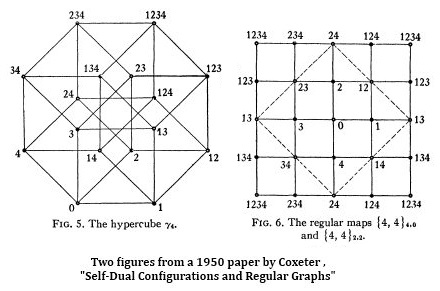 .
.
- A view from 1974, thanks to J. J. Seidel —

- Yesterday's Analogies.
Comments Off on Web Links:
… author of "The Best Little Whorehouse in Texas,"
who reportedly died on Thursday—

Comments Off on For Larry L. King…
… In gratitude for his book Real Presences—
Will and Idea:

A related shell game:
Ad for a talk at Harvard by Nick Bostrom in April 2010—

Click ad for background on the April 10 , 2010, symposium.
See also Bostrom on the The Simulation Argument
and the Log24 April 12, 2010, Shell Game post above.
Note the black diamond logo of Bostrom's Oxford institute.
Comments Off on For George Steiner…
Friday, December 21, 2012
The Moore correspondence may be regarded
as an analogy between the 35 partitions of an
8-set into two 4-sets and the 35 lines in the
finite projective space PG(3,2).
Closely related to the Moore correspondence
is a correspondence (or analogy) between the
15 2-subsets of a 6-set and the 15 points of PG(3,2).
An analogy between the two above analogies
is supplied by the exceptional outer automorphism of S6.
See…
The 2-subsets of a 6-set are the points of a PG(3,2),
Picturing outer automorphisms of S6, and
A linear complex related to M24.
(Background: Inscapes, Inscapes III: PG(2,4) from PG(3,2),
and Picturing the smallest projective 3-space.)
* For some context, see Analogies and
"Smallest Perfect Universe" in this journal.
Comments Off on Analogies*
Thursday, December 20, 2012

Click image for some background.
Comments Off on Speedtalk
Comments Off on For Grimm Day*
See reference AR in "Binary Coordinate Systems."
See also Prewar Berlin in this journal.
Comments Off on Riddled
Wednesday, December 19, 2012
From William M. Kantor's 1978 review of Peter J. Cameron's
1976 book Parallelisms of Complete Designs—
"There are three ways an area of mathematics
can be surveyed: by a vast, comprehensive treatise;
by a monograph on a small corner of the field; or by
a monograph on a cross section."
An area of mathematics—

A small corner of the field—

A cross section—

Commentary:
The area— Four.
The corner— Identity.
The cross section— Window.
The three ways— December 8 ten years ago.
Comments Off on Identity Shining Forth
Tuesday, December 18, 2012
Today's New York Times on a collector of Japanese art who died on December 8th—
In 1954, she made her first trip to Japan. The visit had been suggested by the architect Walter Gropius, whose disciple Benjamin Thompson was designing a modernist house for her in Oyster Bay, on Long Island.
Gropius, a titan of the Bauhaus school, was deeply influenced by the Japanese aesthetic and wanted her to experience its clean, spare lines firsthand.
See Dec. 8th in this journal for the following clean, spare lines:

Japanese character
for "field"
Related material: Looking Deeply and Field.
Comments Off on Lines
For a modern Adam and Eve—
W. Tecumseh Fitch and Gesche Westphal Fitch,
editors of a new four-volume collection titled
Language Evolution (Feb. 2, 2012, $1,360)—

Related material—
|
"At the point of convergence
the play of similarities and differences
cancels itself out in order that
identity alone may shine forth.
The illusion of motionlessness,
the play of mirrors of the one:
identity is completely empty;
it is a crystallization and
in its transparent core
the movement of analogy
begins all over once again."
— The Monkey Grammarian
by Octavio Paz, translated by
Helen Lane (Kindle edition of
2011-11-07, Kindle locations
1207-1210).
|
The "play of mirrors" link above is my own.
Click on W. Tecumseh Fitch for links to some
examples of mirror-play in graphic design—
from, say, my own work in a version of 1977, not from
the Fitches' related work published online last June—

See also Log24 posts from the publication date
of the Fitches' Language Evolution—
Groundhog Day, 2012.
Happy birthday to the late Alfred Bester.
Comments Off on Monkey Grammar
Monday, December 17, 2012

Image adapted from a 1960 Grove Press
(Evergreen paperback E-219) cover
illustration, apparently by Roy Kuhlman,
for The Spirit of Zen , by Alan Watts
Comments Off on The Sun Also Sets
Or: Being There
(A sequel to last night's Lyric Intelligence )

William Deresiewicz reviews Kurt Vonnegut's 1952 novel Player Piano :
The novel’s prescience is chilling. Six years before the left-wing English
sociologist Michael Young published The Rise of the Meritocracy ,
a dystopian satire that coined that now-ubiquitous final word,
Vonnegut was already there.
Related material:
Intelligence Test , Gombrich, and, more generally, Stupidity.
Comments Off on Nonlyric Stupidity
Sunday, December 16, 2012
Comments Off on Lyric Intelligence
Thursday, December 13, 2012
Review:
Cubic models of finite geometries
display an interplay between
Euclidean and Galois geometry.
Related literary remarks: Congregated Light.
Comments Off on Interplay
… The sequel to Vibrations
Charles Taylor, "Epiphanies of Modernism,"
Chapter 24 of Sources of the Self
(Cambridge U. Press, 1989, p. 477) —
“… the object sets up a kind of
frame or space or field
within which there can be epiphany.”
Or place.
See A Prince of Darkness
and "A Clean, Well-Lighted Place."
Comments Off on Space
… Or: A Funny Thing Happened
on the Way to the Embedding
This journal on the morning of Saturday, Dec. 8, 2012:

Marilyn Monroe and her music coach in 1954,
from last night's online New York Times :
" 'We were very close to making love; I don’t remember
the stage we were at, but I would say half-dressed,'
Mr. Schaefer recalled. He added: 'And all of a sudden
for some reason, Marilyn got these vibrations, and
we went over to the window….' " more »
"Mr. Schaefer died on Saturday at 87 at his home in
Fort Lauderdale, Fla. ….
He [had] coached Monroe through 'Diamonds Are
a Girl’s Best Friend,' her signature number in the
1953 movie 'Gentlemen Prefer Blondes' (he arranged
the music as well)…."
Perhaps on Saturday she returned the favor.
Comments Off on Vibrations
Wednesday, December 12, 2012
(Continued from 2 PM ET Tuesday)
“… the object sets up a kind of frame or space or field
within which there can be epiphany.”
— Charles Taylor, "Epiphanies of Modernism,"
Chapter 24 of Sources of the Self
(Cambridge U. Press, 1989, p. 477)
"The absolute consonance is a state of chromatic plenitude."
— Charles Rosen
"… the nearest precedent might be found in Becky Sharp .
The opening of the Duchess of Richmond's ball,
with its organization of strong contrasts and
display of chromatic plenitude, presents a schema…."
— Scott Higgins, Harnessing the Technicolor Rainbow:
Color Design in The 1930s , University of Texas Press,
2007, page 142
Schema I (Click to enlarge.)

Note the pattern on the dance floor.
(Click for wider image.)

Schema II

"At the still point…" — Four Quartets
Comments Off on Chromatic Plenitude
Tuesday, December 11, 2012
"If a man does not keep pace with his companions,
perhaps it is because he hears a different drummer.
Let him step to the music which he hears, however
measured or far away." — Thoreau

"I got a line on you." — Spirit
See also today's previous post and Eve's Menorah.
Comments Off on Line
In memory of Charles Rosen:
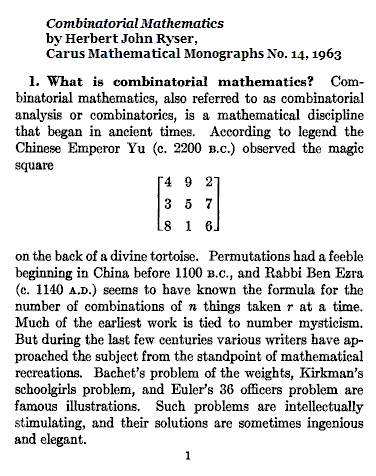
Related material:
The Magic Square in Doctor Faustus (October 10th, 2012)
Elementary Finite Geometry (August 1st, 2012)
The Space of Horizons (August 7th, 2012)
Chromatic Plenitude (Rosen on Schoenberg)

Comments Off on Plenitude
"The study of musical form is an attempt to understand
the way in which musical gestures can be prolonged
and brought to a conclusion. The work of a great critic
like Charles Rosen can entirely change our
understanding of form— not merely by destroying the
neat categories of traditional musicology, but by
showing that form is a large-scale working-out of forces
that are brought into being by the musical material itself."
— The Aesthetics of Music , by Roger Scruton,
Oxford University Press, 1997 (according to
a free online text version of the book)
The link to Rosen has been added. He died on Sunday.
Comments Off on Conclusion
Monday, December 10, 2012
The following passage is suggested by last night's "Eve's Menorah"
and by today's "Review of Leonardo Article" —

Click image to enlarge.
Comments Off on Valery on Ornament
Review of an often-cited Leonardo article that is
now available for purchase online…
Smith and Boucher give a well-illustrated account of
the early history of Truchet tiles, but their further remarks
on the mathematics underlying patterns made with
these tiles (see the diamond theorem* of 1976) are
worthless.
For instance…
Excerpt from pages 383-384—
"A detailed analysis of Truchet's
patterns touches upon the most fundamental
questions of the relation between
mathematical formalism and the structure
of the material world. Separations
between regions differing in density
require that nothing be as important as
something and that large and small cells of
both must coexist. The aggregation of
unitary choice of directional distinction
at interfaces lies at the root of all being
and becoming."
* This result is about Truchet-tile patterns, but the
underlying mathematics was first discovered by
investigating superimposed patterns of half-circles .
See Half-Circle Patterns at finitegeometry.org.
Comments Off on Review of Leonardo Article
Sunday, December 9, 2012
"Now the serpent was more subtle
than any beast of the field…."
— Genesis 3:1
"“The serpent’s eyes shine
As he wraps around the vine….”
– Don Henley
"Nine is a vine."
— Folk rhyme
Part I

Part II

Part III
Halloween 2005—

Click images for some background.
Comments Off on Eve’s Menorah
(Continued)
"… we have taken the first steps
in decoding the uniquely human
fascination with visual patterns…."
— W. Tecumseh Fitch et al. , July 2012
Fitch cites the following as a reference:

Washburn and Crowe discuss symmetries in general, but
not the Galois geometry underlying patterns like some of
those shown on their book's cover.
Comments Off on Adam in Eden
The concept of "deep structure," once a popular meme,
has long been abandoned by Chomskians.
It still applies, however, to the 1976 mathematics, diamond theory ,
underlying the formal patterns discussed in a Royal Society paper
this year.
A review of deep structure, from the Wikipedia article Cartesian linguistics—
|
[Numbers in parentheses refer to pages in the original 1966 Harper edition of Chomsky's book Cartesian Linguistics .]
Deep structure vs. surface structure
"Pursuing the fundamental distinction between body and mind, Cartesian linguistics characteristically assumes that language has two aspects" (32). These are namely the sound/character of a linguistic sign and its significance (32). Semantic interpretation or phonetic interpretation may not be identical in Cartesian linguistics (32). Deep structures are often only represented in the mind (a mirror of thought), as opposed to surface structures, which are not.
Deep structures vary less between languages than surface structures. For instance, the transformational operations to derive surface forms of Latin and French may obscure common features of their deep structures (39). Chomsky proposes, "In many respects, it seems to me quite accurate, then, to regard the theory of transformational generative grammar, as it is developing in current work, as essentially a modern and more explicit version of the Port-Royal theory" (39).
Summary of Port Royal Grammar
The Port Royal Grammar is an often cited reference in Cartesian Linguistics and is considered by Chomsky to be a more than suitable example of Cartesian linguistic philosophy. "A sentence has an inner mental aspect (a deep structure that conveys its meaning) and an outer, physical aspect as a sound sequence"***** This theory of deep and surface structures, developed in Port Royal linguistics, meets the formal requirements of language theory. Chomsky describes it in modern terms as "a base system that generates deep structures and a transformational system that maps these into surface structures", essentially a form of transformational grammar akin to modern studies (42).
|
The corresponding concepts from diamond theory are…
"Deep structure"— The line diagrams indicating the underlying
structure of varying patterns
"A base system that generates deep structures"—
Group actions on square arrays… for instance, on the 4×4 square
"A transformational system"— The decomposition theorem
that maps deep structure into surface structure (and vice-versa)
Comments Off on Deep Structure
Saturday, December 8, 2012
Comments Off on It’s 10 PM
… Chomsky vs. Santa
From a New Yorker weblog yesterday—
"Happy Birthday, Noam Chomsky." by Gary Marcus—
"… two titans facing off, with Chomsky, as ever,
defining the contest"
"Chomsky sees himself, correctly, as continuing
a conversation that goes back to Plato, especially
the Meno dialogue, in which a slave boy is
revealed by Socrates to know truths about
geometry that he hadn’t realized he knew."
See Meno Diamond in this journal. For instance, from
the Feast of Saint Nicholas (Dec. 6th) this year—
The Meno Embedding

For related truths about geometry, see the diamond theorem.
For a related contest of language theory vs. geometry,
see pattern theory (Sept. 11, 16, and 17, 2012).
See esp. the Sept. 11 post, on a Royal Society paper from July 2012
claiming that
"With the results presented here, we have taken the first steps
in decoding the uniquely human fascination with visual patterns,
what Gombrich* termed our ‘sense of order.’ "
The sorts of patterns discussed in the 2012 paper —

"First steps"? The mathematics underlying such patterns
was presented 35 years earlier, in Diamond Theory.
* See Gombrich-Douat in this journal.
Comments Off on Defining the Contest…
Friday, December 7, 2012
In today's New York Times :
The late film executive Steven Bach on
the late literary agent Robert Lescher —
Mr. Bach’s 1985 book about film, “Final Cut:
Dreams and Disaster in the Making of ‘Heaven’s Gate’ ”—
a crow’s-nest view of the cultural and personal tensions
on the set— became a best seller and a Hollywood-insider
classic. In his acknowledgments, Mr. Bach said Mr. Lescher
“was the spiritual father to the book and to its author as well.”
See also "The rest is the madness of art" and Eight Gate.
Comments Off on Bach Gate
( Continued from December 6th — and from Duelle here and in Pynchon )
Part I
The Galois Embedding

Part II

Comments Off on The Embedding
The last name of the author Camelia Elias matches
the first name of the father of Robert "Slowly" Lescher.
Related material: December Days and All Saints.
Comments Off on In Nomine
Comments Off on For Jim Holt
"Fail better." — Samuel Beckett, "Worstward Ho"

"West. And slowly." — Stage direction for a Christmas carol
Comments Off on Westward
Thursday, December 6, 2012
This post was suggested by the December 4th death
of modernist composer Jonathan Harvey, 73,
and by Harvey's reflections on his 2007 opera
Wagner Dream .
For related reflections, see the Oct. 10 post on
the Dürer magic square in Mann's Doctor Faustus .
See also a December 2nd post on the Nov. 18 death of
chess grandmaster Elena Akhmilovskaya Donaldson.

Comments Off on Magic Square
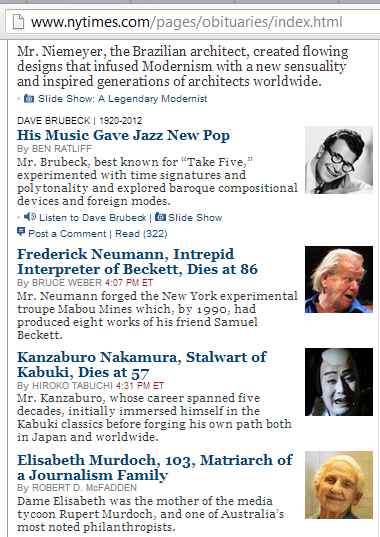
Related material: The Revisiting (December 3rd, 2012)
Comments Off on The Interpreter
Part I
Embedding the Stone (March 23, 2012) —
The Meno Embedding

Part II
ReverbNation.com — Lawrence Class —

Comments Off on The Embedding
A review of a post from December 6, 2002,
suggests a review of more recent remarks.
See June 26, 2012: Looking Deeply.
A later post supplies some mathematical
background. See Counterexample (Nov. 27, 2012).
Happy Feast of Saint Nicholas.
Comments Off on Ten Years Later
Wednesday, December 5, 2012
Comments Off on Finis Coronat
The 1976 monograph "Diamond Theory" was an example
of "programmed art" in the sense established by, for
instance, Karl Gerstner. The images were produced
according to strict rules, and were in this sense
"programmed," but were drawn by hand.
Now an actual computer program has been written,
based on the Diamond Theory excerpts published
in the Feb. 1977 issue of Computer Graphics and Art
(Vol. 2, No. 1, pp. 5-7), that produces copies of some of
these images (and a few malformed images not in
Diamond Theory).
See Isaac Gierard's program at GitHub—
https://github.com/matthewepler/ReCode_Project/
blob/dda7b23c5ad505340b468d9bd707fd284e6c48bf/
isaac_gierard/StevenHCullinane_DiamondTheory/
StevenHCullinane_DiamondTheory.pde
As the suffix indicates, this program is in the
Processing Development Environment language.
It produces the following sketch:

The rationale for selecting and arranging these particular images is not clear,
and some of the images suffer from defects (exercise: which ones?), but the
overall effect of the sketch is pleasing.
For some background for the program, see The ReCode Project.
It is good to learn that the Processing language is well-adapted to making the
images in such sketches. The overall structure of the sketch gives, however,
no clue to the underlying theory in "Diamond Theory."
For some related remarks, see Theory (Sept. 30, 2012).
* For the title, see Darko Fritz, "Notions of the Program in 1960s Art."
Comments Off on Arte Programmata*
Comments Off on December Days
(Midnight in the Garden, continued)
E is for Ending …
Cullinane = Cullinan + E
And for Everlast.
(The Cullinan link above is to a woman
who apparently is the wife of writer
Alan Cowell. See The Revisiting, Dec. 3rd.)
Comments Off on Mate
Tuesday, December 4, 2012
A 1976 monograph:

A 2012 mixtape cover:

A new "Diamond Theory" image found on the Web
today links my work to the "Stoned Ape Theory"
of human evolution due to Terence McKenna.
This link is via a picture, apparently copied from deviantart.com,
of two apes contemplating some psychedelic mushrooms.
The picture is titled "Stoned Ape Theory." The mushrooms in
the picture are apparently taken from an image at DrugNet.net:

Actually, the mathematical work called "diamond theory"
has nothing whatever to do with psychedelic experiences,
although some of the illustrations may appeal to McKenna fans.
Comments Off on McKenna Theory
For the Dec. 3rd-4th graduate conference
at the University of Cambridge on
"Occultism, Magic, and the History of Art"—
Four novels by Charles Williams—

See also the life, and Dec. 1st death, of a former Chief Justice of South Africa.
Comments Off on December Days
Monday, December 3, 2012
Alan Cowell in the The New York Times ,
October 21, 2006—
"Mr. Pinter played the role of Krapp,
a 69-year-old man revisiting
a tape recording he had made at 39…."
See also a weblog post by a 69-year-old man
revisiting a drawing he had made at 39.
The revisiting:
On Guy Fawkes Day 2011,
a return to Guy Fawkes day 2005—
Contrapuntal Themes in a Shadowland.
The drawing:
A clearer version, from 1981, of the central object below —

For commentary on the original 1981 drawing, see
Diamond-Faceted: Transformations of the Rock.
(A link in that page to "an earlier note from 1981"
leads to remarks from exactly thirty years before
the 2011 post, made on another Guy Fawkes Day.)
Comments Off on The Revisiting
For the scholars gathered at a graduate conference
today and tomorrow at Cambridge University* on
"Occultism, Magic, and the History of Art"—
Part I: Krapp
Click image for a 2006 New York Times story —

Part II: Hash

* See Ledger and Red Ink.
Comments Off on Krapp vs. Hash
Sunday, December 2, 2012
From the Los Angeles Times yesterday—

"Chess player Elena Akhmilovskaya Donaldson sits
in deep concentration at the U.S. chess championship
in Seattle in 2002. (Greg Gilbert / Seattle Times /
January 5, 2002)"
Linda Shaw, Seattle Times :
"Elena Akhmilovskaya Donaldson, who was once the world's
second-ranked women's chess player and eloped in 1988
with the captain of the U.S. chess team when they were both
playing at a tournament in Greece, has died. She was 55.
Donaldson, who earned the title of international women's
grandmaster, died Nov. 18 in her adopted hometown of Seattle…."
more »
From the Log24 post "Sermon" on the date of Donaldson's death,
Sunday, Nov. 18, 2012—
"You must allow us to play every conceivable combination of chess."
— Marie-Louise von Franz in Number and Time
An October 2011 post titled Realism in Plato's Cave displays
the following image:

Cover illustration: Knight, Death, and the Devil,
by Albrecht Dürer
George Steiner and myself in Closing the Circle, a Log24 post
of Sept. 4, 2009:
“Allegoric associations of death with chess are perennial….”
"Yes, they are."
For related remarks on knight moves and the devil, see
today's previous two posts, Knight's Labyrinth and The Rite.
Comments Off on Realism
From About.com —
Click image for larger, clearer original —

"A fully lit Advent wreath with a central Christmas candle
on a home altar, in front of icons of Saint Stephen, Saint Michael,
and Our Lady of Czestochowa. (Photo © Scott P. Richert)"
Related material— Baal in The Rite , and today's previous post.
Comments Off on The Rite
A magic— indeed, diabolic— square:

For the construction, see a book
by W. W. Rouse Ball, founding president
of a Cambridge University magic society.
For some related religious remarks,
see Raiders of the Lost Matrix.
Comments Off on Knight’s Labyrinth
Saturday, December 1, 2012
Comments Off on Harvard Humor
Image from this journal on November 11th,
darkened in honor of a Harvard professor
who died on that date—

Related material: Lincoln and Darwin at Harvard.
Comments Off on Through a Lens, Darkly
Evening numbers for the New York lottery
yesterday were 182 and 8691.
One interpretation of the latter number is
8/6/91, birth date of the WWW—
Friday, August 13, 2010
For a Bright Star
m759 @ 2:14 AM
The Hunt for Blue August
From Wikipedia's timeline for 1991—
August 6 – Tim Berners-Lee announces
the World Wide Web project and software
on the alt.hypertext newsgroup. |
For one interpretation of the former number,
see Random Reference.
Comments Off on Lucky Star

Source: Rudolf Koch, The Book of Signs
The American Mathematical Society
(AMS) yesterday:
|
Lars Hörmander (1931-2012)
Friday November 30th 2012
Hörmander, who received a Fields Medal in 1962,
died November 25 at the age of 81. …
more »
|
Some related material:
See also posts on Damnation Morning and, from the
date of Hörmander's death,
Comments Off on Star Wars
Friday, November 30, 2012
"….mirando il punto 
a cui tutti li tempi son presenti"
— Dante, Paradiso , XVII, 17-18
 For instance…
For instance…

Click image for higher quality.
Comments Off on Point
The title of yesterday's 11:22 PM post was "The Place of the Lion."
This is also the title of a novel by Charles Williams.
See, too, Midsummer Eve's Dream and Midsummer Night 2007.
Comments Off on Title
Thursday, November 29, 2012
For C. S. Lewis, who was born on this date in 1898,
and Natalie Wood, who died on this date in 1981
"He was accustomed to receiving manuscripts from strangers…."
— C. P. Snow on mathematician G. H. Hardy
"Whoever you are— I have always depended on
the kindness of strangers." — A Streetcar Named Desire
From this journal on September 24, 2012—
|
"A single self-transcendence" — Aldous Huxley
From an anonymous author at the website Kill Devil Hill—
"This little story… has that climactic moment of
heightened awareness…. This is a moment where
two individuals become one, empowering them
to transcend the limitations of their own individual
frailty and society. It's an epiphany, an almost
divine spark. It is an experience when one plus one
don't equal two, but something far greater."
Kill Devil Hills also appears in a 1983 film—

"Suppose it were possible to transfer
from one mind to another
the experience of another person."
— Trailer for "Brainstorm" (1983),
the last film of Natalie Wood
|
Comments Off on The Place of the Lion
C. P. Snow on G. H. Hardy, in Snow's foreword to A Mathematician's Apology—
"One morning early in 1913, he found, among the letters on his breakfast table, a large untidy envelope decorated with Indian stamps. When he opened it, he found sheets of paper by no means fresh, on which, in a non-English holograph, were line after line of symbols. Hardy glanced at them without enthusiasm. He was by this time, at the age of thirty-six, a world famous mathematician: and world famous mathematicians, he had already discovered, are unusually exposed to cranks. He was accustomed to receiving manuscripts from strangers, proving the prophetic wisdom of the Great Pyramid, the revelations of the Elders of Zion, or the cryptograms that Bacon has inserted in the plays of the so-called Shakespeare."
Some related material (click to enlarge)—

The author links to, but does not name, the source of the above
"line after line of symbols." It is "Visualizing GL(2,p)." See that webpage
for some less esoteric background.
See also the two Wikipedia articles Finite geometry and Hesse configuration
and an image they share—
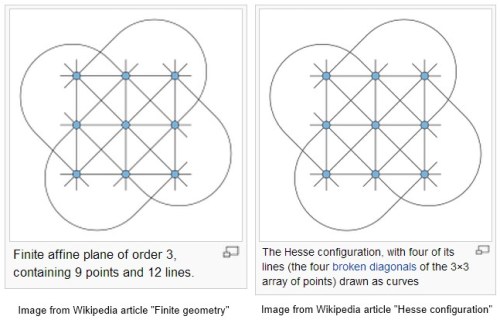
The Hesse here is not Hermann, but Otto.
Comments Off on Lines of Symbols
Quotes from the Bremen site
http://dada.compart-bremen.de/ —


" 'compArt | center of excellence digital art' is a project
at the University of Bremen, Germany. It is dedicated
to research and development in computing, design,
and teaching. It is supported by Rudolf Augstein Stiftung,
the University of Bremen, and Karin und Uwe Hollweg Stiftung."
See also Stiftung in this journal.
Comments Off on Conceptual Art
Wednesday, November 28, 2012
From a New York Times weblog last night—
The Reconstruction of Rome
By ROBERT BEASER
The New York Times , Nov. 27, 2012, 9:00 PM
Logic Pro software enables us to layer complex
technolike tracks and simulate meta, sampled orchestras—
fake orchestras that have on more than one occasion
fooled a jury of the most discriminating composers
into thinking it was the real thing. …
Several decades of cultural relativism has helped to
hasten the decline of the dominance of Western canon….
This next generation is becoming adept at taking small
bits of information, unformed, and assembling it
into larger asynchronous maps, of nonlinear order.
IT from BITS*
These failures of number agreement—
orchestras… it, decades… has, bits… it —
suggest a look at synesis.
Synesis is a traditional grammatical/rhetorical term
derived from Greek σύνεσις (originally meaning "unification,
meeting, sense, conscience, insight, realization, mind, reason").
A constructio kata synesin (or constructio ad sensum in Latin)
means a grammatical construction in which a word takes
the gender or number not of the word with which it should
regularly agree, but of some other word implied in that word.
It is effectively an agreement of words with the sense,
instead of the morphosyntactic form. Example:
"If the band are popular, they will play next month." —Wikipedia
The conclusion of Wikipedia's synesis article is of particular interest:
See also…. Elohim , a Hebrew word whose number varies.
* A nod to the late John Archibald Wheeler.
Comments Off on Synesis
Comments Off on Annals of Religion
A pdf of a 1977 three-page article with this title
has been added at finitegeometry.org/sc.
Comments Off on Diamond Theory
Tuesday, November 27, 2012
Today's midday New York Lottery: 444 and 5222.
See Deuteronomy 4:44 and 5:2-22.
Comments Off on Raiders of the Lost Lottery
The non-Coxeter simple reflection group of order 168
is a counterexample to the statement that
"Every finite reflection group is a Coxeter group."
The counterexample is based on a definition of "reflection group"
that includes reflections defined over finite fields.
Today I came across a 1911 paper that discusses the counterexample.
Of course, Coxeter groups were undefined in 1911, but the paper, by
Howard H. Mitchell, discusses the simple order-168 group as a reflection group .
(Naturally, Mitchell's definition of "reflection" and his statement that
"The discussion of the binary groups
applies also to the case p = 2."
should be approached with care.)

A review of this topic might be appropriate for Jessica Fintzen's 2012 fall tutorial at Harvard
on reflection groups and Coxeter groups. The syllabus for the tutorial states that
"finite Coxeter groups correspond precisely to finite reflection groups." This statement
is based on Fintzen's definition of "reflection group"—
"Reflection groups are— as their name indicates—
groups generated by reflections across
hyperplanes of Rn which contain the origin."
For some background, see William Kantor's 1981 paper "Generation of Linear Groups"
(quoted at the finitegeometry.org page on the simple order-168 counterexample).
Kantor discusses Mitchell's work in some detail, but does not mention the
simple order-168 group explicitly.
Comments Off on Counterexample
Monday, November 26, 2012
… Meets "The Master"—

Today's midday NY Lottery: 333 and 5885.
"Continue a search for thirty-three and three." — The Eight (1988)
"Make me young." — Kilgore Trout in
Breakfast of Champions . Trout was modeled after
author Theodore Sturgeon… who died on 5/8/85.
(An example of Sturgeon's work: The Dreaming Jewels (1950).)
.jpg)
Related illustrations from the eighth day of 2012—

See also "I'm sorry to be catechizing you like this."
Comments Off on “The Eight”…
Sunday, November 25, 2012
The New York Lottery:
CATCH OUR LIVE DRAWINGS:
NUMBERS and WIN 4
Draw Day: Twice Daily
Draw Time: Midday: 12:20 p.m. – 12:30 p.m.
Evening: 7:30 p.m. – 7:40 p.m.
NY Lottery this evening: 674 and 1252 —
 .
.
Contrapuntal themes:
Related Log24 posts today—
at 11:30 AM ET (see post 674 ) and
at 7 PM ET (see post 1252).
The Devil at Midday:
Interpreting the midday numbers,
172 and 7817, is more difficult. Perhaps 172
refers to a Zen page number in a post from
the Feast of Saint Louis in 2003, and perhaps,
in a less saintly manner, 7817 refers to
two posts in which these four digits appear
in product numbers within links— namely,
the Garden Party "Background" link and
the Seven Bridges "wild" link.
Then again, perhaps not.
Comments Off on By the Numbers
"It's a grim joke." — Amy Adams in "The Master"

When Irish Eyes Are Smiling…

Click diagram for some background from 3/17.
See, too, some background on Amy Adams and on Leap Day.
For related Harvard humor, see Venn Diagram.
Comments Off on Grim Joke
… For the Boston Church of the Advent coffee hour:

Suggested topic:
The Klee picture on the above cup— a graphic rendition of the poem
Once Emerged from the Gray of Night — as presented on the cover
and discussed in the text of Martha B. Helfer's The Word Unheard .
Talk amongst yourselves.
Comments Off on Darstellung…
Today's sermon is for Martha B. Helfer, author of
the treatise on Darstellung in today's previous post
and of the following—
(Click for clearer image.)

Helfer's The Word Unheard was published by Northwestern University Press
on St. Andrew's Day, 2011. Log24 posts on that day—
Lines, Grids, and Fatuity for St. Andrew's Day.
The last of these warned of an upcoming Jewish Book Week event
on February 22, 2012.
That date turned out to be Ash Wednesday. See a Log24 post on that topic
that quotes a poet, T.S. Eliot, with anti-Semitic proclivities—
"And the light shone in darkness and
Against the Word the unstilled world still whirled
About the centre of the silent Word."
— T. S. Eliot, "Ash Wednesday"
This is perhaps not entirely irrelevant to Helfer's title, The Word Unheard .
* A concept of Schopenhauer and Hitler, and the first name of
a fictional Boston mathematician.
Comments Off on Will*
The title of yesterday's post Will and Representation is of course
a reference to Schopenhauer's philosophical work of that name.
As the post itself indicates, the title is also a punning reference to
mathematical representation theory .
To avoid confusion, it should be noted that Schopenhauer's
representation , in the original German, was Vorstellung .
The German for mathematical representation theory is,
on the other hand, Darstellungstheorie . (The mathematical
use of Vorstellung is non-technical, referring to concepts
of pedagogy. (A group presentation is a Präsentation .))
For a discussion of the Vorstellung-Darstellung distinction
in philosophy, not mathematics, see…
The Retreat of Representation: The Concept of Darstellung
in German Critical Discourse , by Martha B. Helfer,
State University of New York Press, 1996, esp. pp. 24-26.
Comments Off on Representation
Saturday, November 24, 2012
Robert A. Wilson, in an inaugural lecture in April 2008—
Representation theory
A group always arises in nature as the symmetry group of some object, and group
theory in large part consists of studying in detail the symmetry group of some
object, in order to throw light on the structure of the object itself (which in some
sense is the “real” object of study).
But if you look carefully at how groups are used in other areas such as physics
and chemistry, you will see that the real power of the method comes from turning
the whole procedure round: instead of starting from an object and abstracting
its group of symmetries, we start from a group and ask for all possible objects
that it can be the symmetry group of .
This is essentially what we call Representation theory . We think of it as taking a
group, and representing it concretely in terms of a symmetrical object.
Now imagine what you can do if you combine the two processes: we start with a
symmetrical object, and find its group of symmetries. We now look this group up
in a work of reference, such as our big red book (The ATLAS of Finite Groups),
and find out about all (well, perhaps not all) other objects that have the same
group as their group of symmetries.
We now have lots of objects all looking completely different, but all with the same
symmetry group. By translating from the first object to the group, and then to
the second object, we can use everything we know about the first object to tell
us things about the second, and vice versa.
As Poincaré said,
Mathematicians do not study objects, but relations between objects.
Thus they are free to replace some objects by others, so long as the
relations remain unchanged.
Par exemple—
Fano plane transformed to eightfold cube,
and partitions of the latter as points of the former:

* For the "Will" part, see the PyrE link at Talk Amongst Yourselves.
Comments Off on Will and Representation*
For the title, see the phrase "reappearing number" in this journal.
Some related mathematics—
the Greek labyrinth of Borges, as well as…
 .
.
Note that "0" here stands for "23," while ∞ corresponds to today's date.
Comments Off on Reappearing All Over Again
New today…
John Markoff in this morning's New York Times—
"…what is new in recent months is the growing speed and accuracy
of deep-learning programs, often called artificial neural networks
or just 'neural nets' for their resemblance to the neural connections
in the brain."
Not so new…
From the early days of Mike Lynch's Autonomy Inc.—
"Autonomy 's intelligent agents use neural networking
to search for patterns of information, rather than
specific words or phrases, thereby distinguishing relevant
from irrelevant information." (Business Wire , October 8, 1996)
And from 1999—

Comments Off on Deep Agents

For the answer, click here.
Connoisseurs of synchronicity may note two posts
from the date the above photo was taken:
First Draft of History and The Swedish Solution.
(The late Larry Hagman was, according to NBC News, "a longtime member
of the Peace and Freedom Party, a minor leftist organization in California.")
Comments Off on Who Shot J. R.?
Thursday, November 22, 2012
(Continued from 1986)
|
S. H. Cullinane
The relativity problem in finite geometry.
Feb. 20, 1986.
This is the relativity problem: to fix objectively a class of equivalent coordinatizations and to ascertain the group of transformations S mediating between them.
— H. Weyl, The Classical Groups ,
Princeton Univ. Pr., 1946, p. 16
In finite geometry "points" are often defined as ordered n-tuples of a finite (i.e., Galois) field GF(q). What geometric structures ("frames of reference," in Weyl's terms) are coordinatized by such n-tuples? Weyl's use of "objectively" seems to mean that such structures should have certain objective— i.e., purely geometric— properties invariant under each S.
This note suggests such a frame of reference for the affine 4-space over GF(2), and a class of 322,560 equivalent coordinatizations of the frame.
The frame: A 4×4 array.
The invariant structure:
The following set of 15 partitions of the frame into two 8-sets.

A representative coordinatization:
0000 0001 0010 0011
0100 0101 0110 0111
1000 1001 1010 1011
1100 1101 1110 1111
The group: The group AGL(4,2) of 322,560 regular affine transformations of the ordered 4-tuples over GF(2).
|
S. H. Cullinane
The relativity problem in finite geometry.
Nov. 22, 2012.
This is the relativity problem: to fix objectively a class of equivalent coordinatizations and to ascertain the group of transformations S mediating between them.
— H. Weyl, The Classical Groups ,
Princeton Univ. Pr., 1946, p. 16
In finite geometry "points" are often defined as ordered n-tuples of a finite (i.e., Galois) field GF(q). What geometric structures ("frames of reference," in Weyl's terms) are coordinatized by such n-tuples? Weyl's use of "objectively" seems to mean that such structures should have certain objective— i.e., purely geometric— properties invariant under each S.
This note suggests such a frame of reference for the affine 4-space over GF(2), and a class of 322,560 equivalent coordinatizations of the frame.
The frame: An array of 16 congruent equilateral subtriangles that make up a larger equilateral triangle.
The invariant structure:
The following set of 15 partitions of the frame into two 8-sets.

A representative coordinatization:

The group: The group AGL(4,2) of 322,560 regular affine transformations of the ordered 4-tuples over GF(2).
|
For some background on the triangular version,
see the Square-Triangle Theorem,
noting particularly the linked-to coordinatization picture.
Comments Off on Finite Relativity
Jennifer Scott at IT Pro , Feb. 16, 2012, on Autonomy—
Mike Lynch, founder of Autonomy and vice president
of information management at HP, took to the stage
at his new parent company’s global partner conference
to impart his philosophy to the 3,000 partners gathered.
‘It is no longer about the data but about the meaning
of that data,’ he said. ‘There is a fundamental revolution
going on in information and the industry is now about
the “I” not the “T” in IT.'”
Click on the logo below for the source.

See also today’s previous post and…
|
“After A Wrinkle in Time was finally published,
it was pointed out to me that the villain,
a naked disembodied brain, was called ‘It’
because It stands for Intellectual truth
as opposed to a truth which involves the whole of us,
heart as well as mind. That acronym had never
occurred to me. I chose the name It intuitively,
because an IT does not have a heart or soul.
And I did not understand consciously
at the time of writing that the intellect,
when it is not informed by the heart, is evil.” |
Comments Off on Putting the “I” in “IT”
Arthur C. Clarke—
"Any sufficiently advanced technology is indistinguishable from magic."
"The HP/Autonomy Debacle," by John C. Dvorak at pcmag.com on Tuesday, Nov. 20, 2012—
"The whole Autonomy thing was weird since the company seemed to be performing magic. On co-founder Michael Richard Lynch's Wikipedia page, the company is described as 'a leader in the area of computer understanding of unstructured information, an area which is becoming known as meaning-based computing .'
I do not know how gullible HP's board of directors is, but when I see the sudden emergence of something called 'meaning-based computing,' the alarms sound and the bullcrap meter begins to tag the red line."
A story by Terence K. Huwe in Online magazine, Sept.-Oct. 2011, defines meaning-based computing (MBC), discusses Autonomy , and llnks to…
John Markoff in The New York Times , March 4, 2011—
"Engineers and linguists at Cataphora, an information-sifting company based in Silicon Valley, have their software mine documents for the activities and interactions of people— who did what when, and who talks to whom. The software seeks to visualize chains of events. It identifies discussions that might have taken place across e-mail, instant messages and telephone calls.
Then the computer pounces, so to speak, capturing 'digital anomalies' that white-collar criminals often create in trying to hide their activities.
For example, it finds 'call me' moments— those incidents when an employee decides to hide a particular action by having a private conversation. This usually involves switching media, perhaps from an e-mail conversation to instant messaging, telephone or even a face-to-face encounter."
For example…

Comments Off on The Red Line vs. the Red Eye
Wednesday, November 21, 2012
Jonathan Weil at Bloomberg.com yesterday
on the HP-Autonomy story—
"The goodwill figure is especially telling."
Comments Off on Hunting Goodwill
Tuesday, November 20, 2012
From remarks by Wallace Stevens featured in recent Log24 posts:
"The poet finds that as between these two sources: the imagination and reality, the imagination is false, whatever else may be said of it, and reality is true; and being concerned that poetry should be a thing of vital and virile importance, he commits himself to reality, which then becomes his inescapable and ever-present difficulty and innamorata. In any event, he has lost nothing; for the imagination, while it might have led him to purities beyond definition, never yet progressed except by particulars. Having gained the world, the imaginative remains available to him in respect to all the particulars of the world. Instead of having lost anything, he has gained a sense of direction and a certainty of understanding. He has strengthened himself to resist the bogus."
— Bard College speech of 1951
Related material:
With Autonomy , H-P Bought An Old-Fashioned
Accounting Scandal. Here's How It Worked.
(Forbes , Nov. 20, 2012)
Hewlett-Packard is losing a star in Mike Lynch
(The Guardian , May 25, 2012)
The Quest for Meaning: The world's smartest search engine
took 250 years to build. Autonomy is here.
(Wired , Feb. 2000)
Comments Off on Resisting the Bogus
This post is in memory of an English church musician whose
death was noted here yesterday evening in a post titled
"The Particulars of Rapture," a phrase from Wallace Stevens.
Sir Philip Ledger, who died on Sunday, was a
"church musician who produced magical settings
of carols," according to The Telegraph RSS feed.
It is not clear what the Telegraph meant by "magical settings."
Perhaps the phrase "his settings of carols" in his obituary refers
to the annual service of Nine Lessons and Carols at Cambridge,
where he was for a time director of music at King's College.
If so, the settings would be the Lessons, readings from the Bible
(a "ledger," in the sense defined below). Such readings should
not be confused with notions from the world of Harry Potter.
Examples: The Lessons from last Christmas in Cambridge.

Comments Off on The Particulars of Language
Monday, November 19, 2012
"And forth the particulars of rapture come."
— Wallace Stevens, "Notes Toward a Supreme Fiction,"
Canto IV of "It Must Change," quoted here yesterday.
A death yesterday: Sir Philip Ledger.

Comments Off on The Particulars of Rapture
From today's noon post—
"In all his poems with all their enchantments
for the poet himself, there is the final enchantment
that they are true. The significance of the poetic act
then is that it is evidence. It is instance and illustration.
It is an illumination of a surface,
the movement of a self in the rock.
Above all it is a new engagement with life.
It is that miracle to which the true faith of the poet
attaches itself."
— Wallace Stevens at Bard College, March 30, 1951
Stevens also said at Bard that
"When Joan of Arc said:
Have no fear: what I do, I do by command.
My brothers of Paradise tell me what I have to do.
these words were the words of an hallucination.
No matter what her brothers of Paradise drove her to do,
what she did was never a poetic act of faith in reality
because it could not be."
There are those who would dispute this.
Some related material:
"Ageometretos me eisito."—
"Let no one ignorant of geometry enter."—
Said to be a saying of Plato, part of the
seal of the American Mathematical Society—

A poetic approach to geometry—
"A surface" and "the rock," from All Saints' Day, 2012—

— and from 1981—
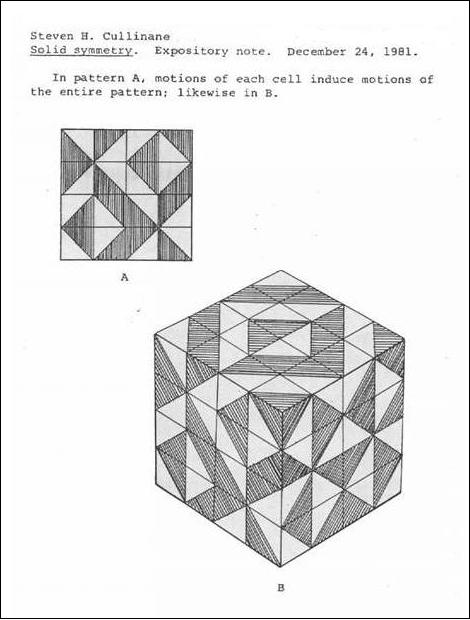
Some mathematical background for poets in Purgatory—
"… the Klein correspondence underlies Conwell's discussion
of eight heptads. These play an important role in another
correspondence, illustrated in the Miracle Octad Generator
of R. T. Curtis, that may be used to picture actions
of the large Mathieu group M24."
Comments Off on Poetry and Truth
Speech by Wallace Stevens upon accepting
an honorary degree from Bard College in 1951—
(Click to enlarge.)

Transcription of conclusion:
"In all his poems with all their enchantments
for the poet himself, there is the final enchantment
that they are true. The significance of the poetic act
then is that it is evidence. It is instance and illustration.
It is an illumination of a surface,
the movement of a self in the rock.
Above all it is a new engagement with life.
It is that miracle to which the true faith of the poet
attaches itself."
— Wallace Stevens at Bard College, March 30, 1951
Comments Off on Speech
Sunday, November 18, 2012
Happy birthday to…

Today's sermon, by Marie-Louise von Franz—

For more on the modern physicist analyzed by von Franz,
see The Innermost Kernel , by Suzanne Gieser.
Another modern physicist, Niels Bohr, died
on this date in 1962…
|

The circle above is marked with a version
of the classic Chinese symbol
adopted as a personal emblem
by Danish physicist Niels Bohr,
leader of the Copenhagen School.
For the square, see the diamond theorem.
"Two things of opposite natures seem to depend
On one another, as a man depends
On a woman, day on night, the imagined
On the real. This is the origin of change.
Winter and spring, cold copulars, embrace
And forth the particulars of rapture come."
— Wallace Stevens,
"Notes Toward a Supreme Fiction,"
Canto IV of "It Must Change"
|
Comments Off on Sermon
(Continued)
Rachel Dodes in The Wall Street Journal
on All Souls' Day, 2012—
"In one of the first lines uttered by Daniel Day-Lewis, playing Abraham Lincoln in the new Steven Spielberg film opening Nov. 9, he says, 'I could be bounded in a nutshell, and count myself a king of infinite space— were it not that I have bad dreams.'
The line was ripped straight from 'Hamlet,' by Lincoln's favorite writer, William Shakespeare. Tony Kushner, the Pulitzer Prize-winning playwright ('Angels in America') who wrote the script for the film, says that Shakespeare, much like Lincoln, 'had extraordinary mastery over the darkest parts of the human spirit.'"
The above quotation omits Shakespeare's words prefacing the nutshell part— "O God."
These same words in a different tongue— "Hey Ram"— have often been quoted as the last words of Gandhi. (See yesterday's noon post.)
"… for the Highest Essence (brahman ),
which is the core of the world, is identical
with the Highest Self (ātman ), the kernel
of man's existence."
— Heinrich Zimmer, Myths and Symbols
in Indian Art and Civilization , Pantheon
Books, 1946, page 142
Related material: A post linked to here on Friday night
that itself links to a different Shakespeare speech.
Comments Off on Kernel
Saturday, November 17, 2012
Last evening's NY Lottery numbers
985 and 3274, interpreted as the
numbers of Log24 posts, suggest
a look at Joyce's nightmare— history.
* The title refers both to a film and to
a Log24 post, Random Access Memory.
Comments Off on Hey RAM*
Friday, November 16, 2012

The Telegraph this evening has an obituary for
Theresa Brown, a Texas madam who reportedly
died on September 18, 2012.
In her honor, an update has been made to a Log24 post
of that date. I hope she finds the update relevant.
* "Love Stage" — See yesterday's post.
Comments Off on Ananga Ranga*
Thursday, November 15, 2012
(Continued)
On a mathematician who died on All Souls' Day 2012—
"… he enthusiastically shared with us the many stories
of Indian epics like Mahabharata." — Online tribute
This suggests a pictorial review incorporating some
images from past Log24 posts.
Best Exotic Ananga Ranga

Log24 on All Souls' Day 2012—



Click images for some background.
Comments Off on A Passage to India
« Newer Posts —
Older Posts »

















![IMAGE- The Art World: Shapes of Things- The Birth of the Abstract [New Yorker title]](http://www.log24.com/log/pix12D/121231-Schjeldahl-Review.jpg)




































































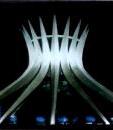
























.jpg)

 .
.
























